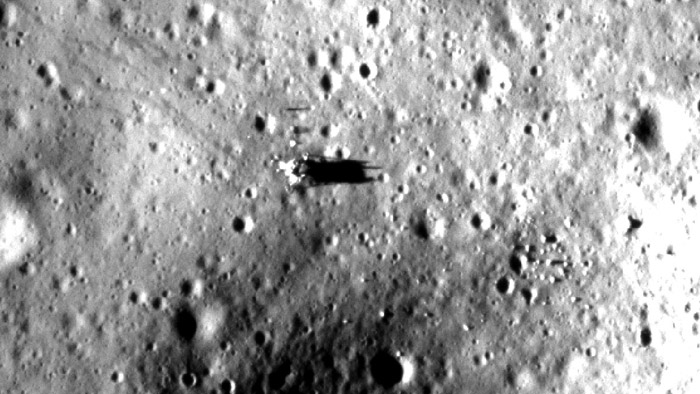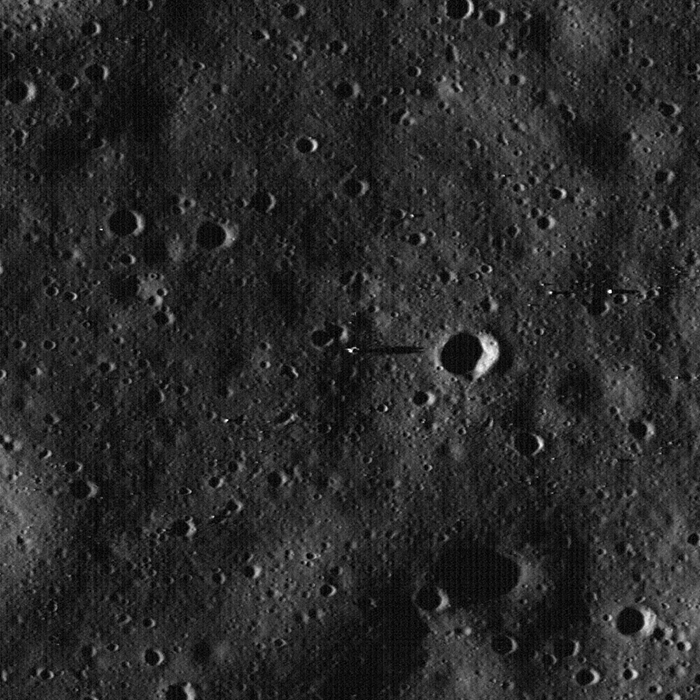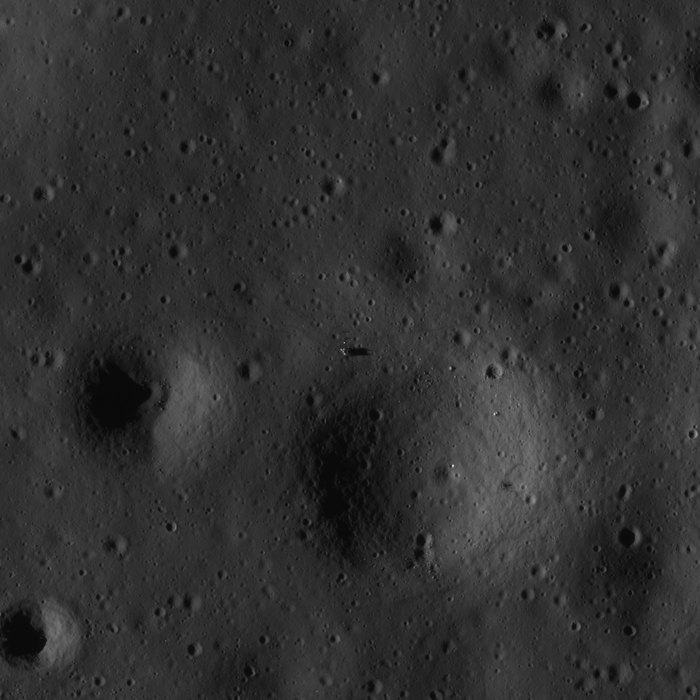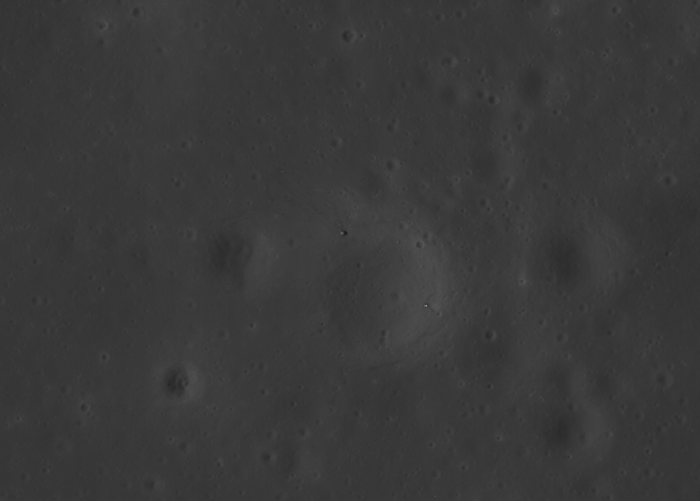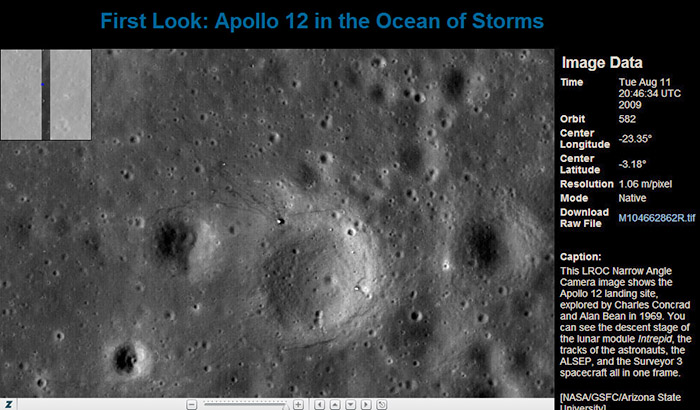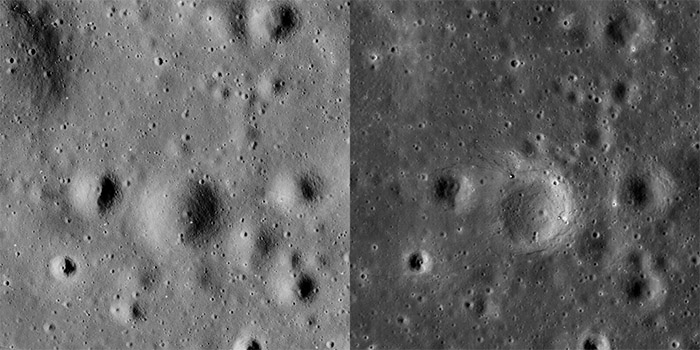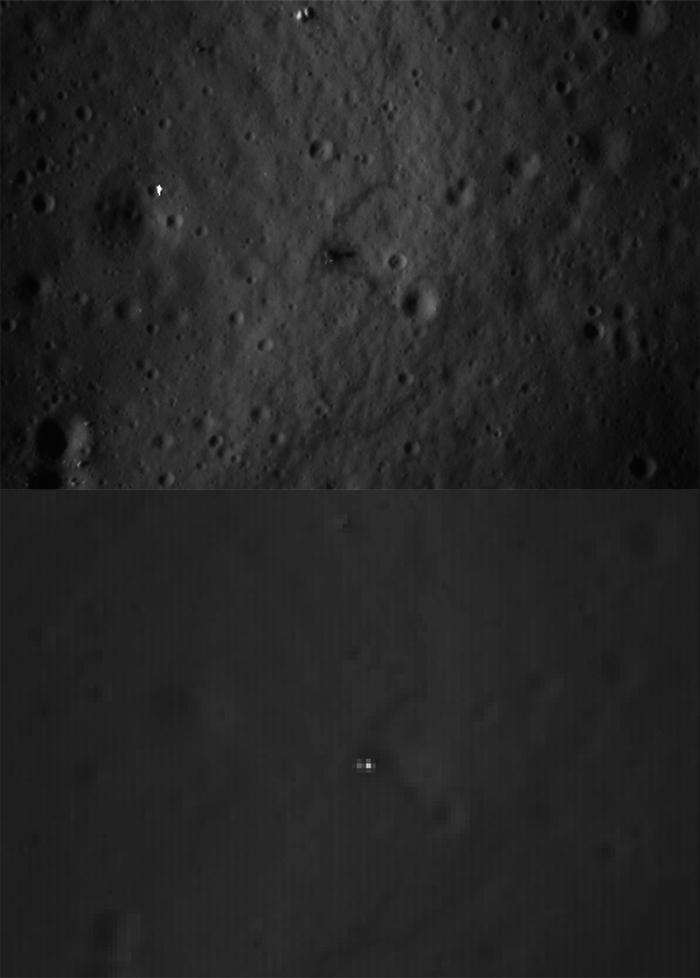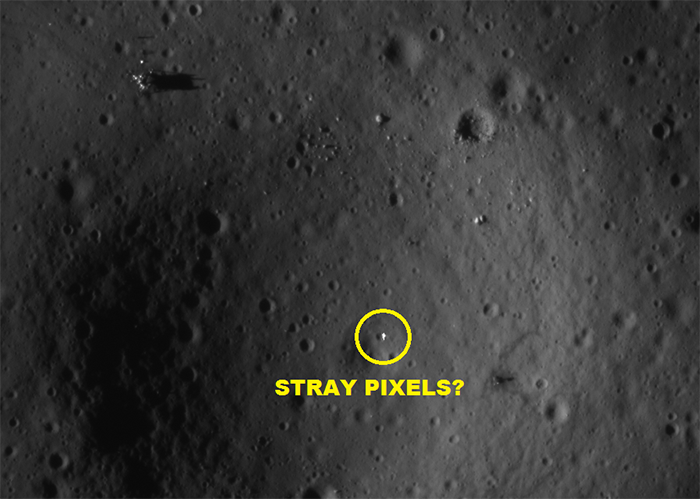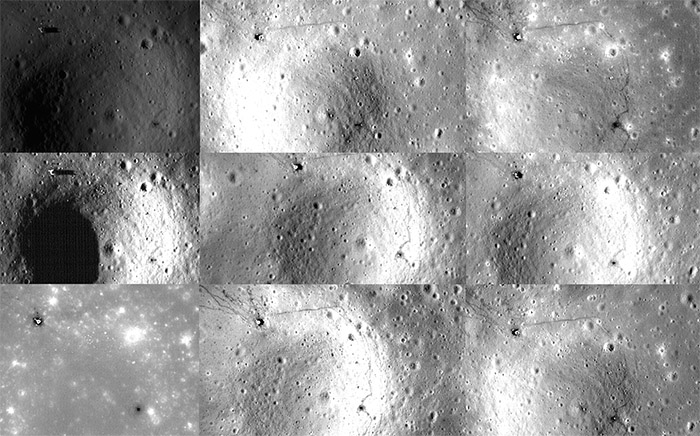Jarrah White’s Column
India releases Chandrayaan-2 image files of Apollo sites:
Further photo analysis
This is a follow up to my Column #2. If you have not read that please read it first for context. When writing the second column of this series back in September 2021, I was only aware of Chandrayaan-2’s April 2, 2021 image of the Apollo 11 site. Shortly after publishing, I learned that contrary to what I was informed, the picture was not unveiled on September 3, 2021. It was actually unveiled during a June 19, 2021 webinar on YouTube hosted on the Indian Society of Geomatics – Ahmedabad Chapter (ISG AC), alongside another image from the Orbital High Resolution Camera (OHRC), and this second image, dated April 5, 2021 featured the Apollo 12 site. 1

Fig. 1. Screenshot of ISG AC webinar featuring OHRC images of the Apollo 11 and 12 sites.
While the Apollo 11 image showed a distinctly three-legged craft, the Apollo 12 image was more in line with what we’ve come to expect to see from NASA’s Lunar Reconnaissance Orbiter (LRO). Some have written in to tell me that there are no boot print trails in the OHRC image of the Apollo 11 site. The same cannot be said about the OHRC image of the Apollo 12 site. It has darkened squiggles and stretches of pixels helpfully labelled ‘Astronaut tracks (foot path)’. It also has a row of dark pixels labelled ‘Flag Pole Shadow’ which I will address later.

Fig. 2. Screenshot of ISG AC OHRC image of the Apollo 12 site extracted from the ISG AC webinar screenshot, purporting to show boot trails and the flag pole shadow.
Taking the overall OHCR Apollo 12 image, notwithstanding the lack of clarity, if this was a telescopic view through a ground-based telescope or even a transmission from a mission with no association whatsoever with NASA, there would be no question as to what the image shows. But as stated in September, although Chandrayaan-2 is an ISRO mission, the data is being jointly received by ISRO’s Telemetry, Tracking and Command Network (ISTRAC) and NASA’s Deep Space Network (DSN). Although NASA’s LRO had a camera supplied by Arizona State University (ASU), the incoming data from the LROC is first received by NASA’s White Sands Tracking Facility and then transferred to NASA’s Goddard Center. Only then is the data passed on to ASU – providing the opportunity for the images to be photo manipulated even before ASU receives them.
In the case of Chandrayaan-2, given that the Apollo 11 image shows a very differently shaped craft and no footprints, I suspect that the image of the Apollo 11 site was first received by ISTRAC; whereas the image of the Apollo 12 site, more typical of what we’ve seen from the LRO, was first received by NASA’s DSN. That said, I dare say that ISRO's collaboration with NASA only extends as far as receiving the signals (though I may be proved wrong on that). Based on the available information and data, I do not believe that ISRO has photo-manipulated their pictures for NASA, rather NASA has been pulling a fast one on ISRO with any OHRC pictures of the landing sites that they have exclusively received.
The ISTRAC ground stations are mostly located in their home country of India at Bengaluru, Lucknow, Sriharikota, Port Blair, Thiruvananthapuram, and Byalalu. Their international ground facilities are located in Biak, Indonesia; Brunei, northeast of Indonesia; and the Indian ocean island of Mauritius, east of Madagascar.2, 3 Whereas NASA’s Deep Space Network (DSN) consists of three facilities designated as a Deep Space Communications Complex (DSCC): Canberra, Australia (CDSCC); Madrid, Spain (MDSCC); and Goldstone, California (GDSCC).
Because of the way these facilities are distributed around the globe and the eastward rotation of the Earth, NASA’s Australian facilities and ISTRAC’s Indonesian and Brunei facilities would mostly be in line of sight with the Moon simultaneously, although the CDSCC has a very short window before moonrise over Biak. Likewise, any tracking station in India would always have simultaneous line of sight to the Moon with either Australia or Spain. By comparison, NASA’s MDSCC and GDSCC have a much larger window during which one or both of them would be the only facilities in line of sight with the Moon to receive Chandrayaan-2’s downlink.
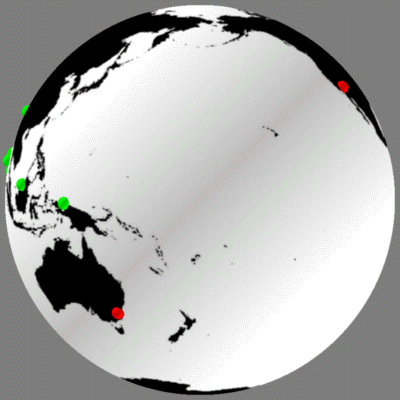
Fig. 3a. This animation shows the Earth as seen from the Moon during a full rotation. The ISRO’s ISTRAC stations are represented as green dots and NASA’s DSN facilities are represented as red dots. A selection of freeze frames are also supplied, showing which stations had line of sight to the Moon at given intervals:
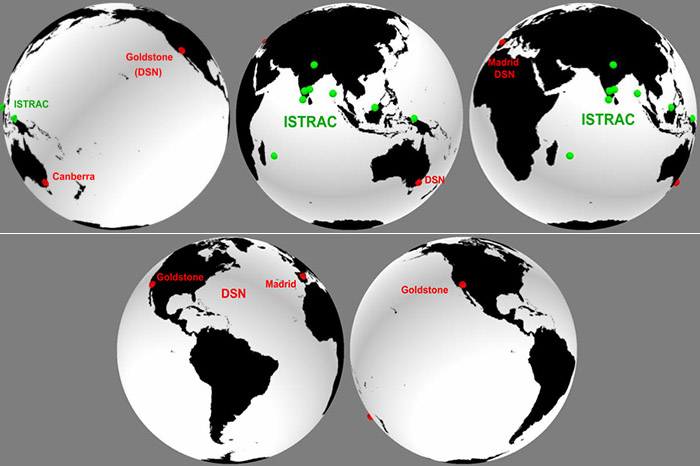
Fig. 3b. Upper L-R: ISTRAC facilities, CDSCC, and GDSCC; ISTRAC facilities and CDSCC; MDSCC, ISTRAC facilities and CDSCC; lower L-R: DSN GDSCC and MDSCC; DSN GDSCC and CDSCC. Any time interval in which NASA’s facilities are the only ones receiving images from Chandrayaan-2 is an opportunity for said images to be tampered with before passing them onto ISRO.
Now I’m sure NASA would have loved to have been the only ones receiving pictures from Chandrayaan-2 – it would have essentially guaranteed another fox-guarding-the-henhouse scenario as was the case on LRO. But because they are only assisting ISRO in the data reception, the best NASA can hope for is Chandrayaan-2 images of the Apollo sites to be transmitted during a time when its DSN are the only stations in line of sight to receive them. Thus allowing NASA to photo manipulate the pictures before forwarding them onto ISRO.
It would not be wise for NASA to make such photo manipulations during a time when ISRO could also receive the pictures, as the Indians could cross check the files respectively received by ISTRAC and DSN and tell if something had been added. When the cat’s away, the mice will play. Thus if an Apollo site image was received by ISTRAC, NASA would have to just grin and bear it – as I suspect was the case with the Apollo 11 image.
Wanting to follow this up, on October 7, 2021 I sent emails to the SAS ISRO webmaster and also the Secretary of ISGAC (whose email address was associated with the YouTube account hosting the webinar) to ask which tracking network received these two images. But my messages were not answered. The public has a right to know who received and handled these pictures. At the time of writing, I am still waiting for ISRO to confirm or deny my suspicion as to which of the two tracking networks received them.
Much more recently, ISRO finally released the OHRC data for these two landing sites – although they were not the ones who broke the story. There was no official announcement or public unveiling or anything of the sort. But on February 22, 2022, Ciel & Espace, (the popular French bi-monthly astronomy magazine) published an article on their website titled: La sonde lunaire Chandrayaan 2 détaille les sites d’Apollo 11 et 12.4 The article is in French and has cropped versions of the two images in question.

Fig. 4. OHRC image of the Apollo 11 site, 605x457 pixels, as published by Ciel & Espace.
Fig. 5. OHRC image of the Apollo 12 site, 1196x673 pixels, as published by Ciel & Espace, click to enlarge.
For propagandists, this was enough to ‘debunk’ the central thesis of my previous article. However, it seems Ciel & Espace’s copy of the Apollo 11 image has been brightened and adjusted to the point that the surrounding pixels bleed into one another – giving a false representation of the original picture. You can see how in the September 2021 presentation, the centre of the spacecraft had some grey shading around it. The version published on the French website is completely white with no shading. The upper and lower left legs appear noticeably wider, in fact they seem to have merged with the central part of the spacecraft, indicating that pixels of the object's parts have bled into each other and even bled into the pixels of the terrain surrounding it.

Fig. 6. Comparison of the OHRC Apollo 11 site image as shown during the September 2021 presentation and as published by Ciel & Espace.
The terrain itself is also considerably brighter than the images featured in ISROs presentations. If we throw the YouTube screenshot into Photoshop and use the eyedropper tool to measure the RGB values, we can see the surface varies from R,G,B = 63 to R,G,B = 107. By comparison, the lunar surface in the Ciel & Espace version has RGB values ranging between R,G,B = 77 to R,G,B = 234. With the brightened landers being a pure white at R,G,B = 255. This deceptive brightening and pixel bleeding is especially noticeable directly South of the lander. In the September 2021 screenshot, the terrain has an illuminated space (about 9 pixels wide) between two craters or mound shadows. The brightening and pixelation of the Ciel & Espace version deceptively makes this patch of terrain appear to be part of the spacecraft. Is this supposed to be the absent fourth leg? That would be one thicc LM if true! At ~0.3m/pixel resolution, this would imply a leg diameter of 2.7m! The LM legs were actually about 0.2m in diameter.
Ciel & Espace is edited by the Association Francaise d’Astronomie (AFA) and the author of this article, the science journalist Philippe Henarejos, is its Editor-in-Chief. The article is lacking in detail as to when the photos were taken and from where they were sourced. Even in the YouTube presentation, we were told the Apollo 11 image was recorded on April 2, 2021 and the Apollo 12 image on April 5, 2021. Yet despite the dates and times being clearly posted in the Browse & Download section of ISRO’s website, Henarejos doesn’t offer any dates nor even provide a link or reference the ISRO link. With regard to the Apollo 11 image, the translation reads:
The date of the shooting was not indicated. But given the low level illumination of the Sun and the orientation of its rays, we can deduce that it was shortly before the start of a two-week lunar night over this part of the Sea of Tranquility. [emphasis added]
His next sentences tell the reader what is important to note is the level of detail in these images. Essentially, ‘never mind the dating, focus on the hardware’. The fact that Henarejos does not specify when these pictures were taken suggests somebody merely sent them to him without specifying the source. Yet his position on the journal, and in the world of astronomy, rather belies this notion, especially since despite the purported lack of information about ‘when’, he is entirely accurate when it comes to the lighting conditions for both those OHRC images: consulting an astronomical ephemeris the Apollo 11 image is correct to within 48 hours of the Moon’s last quarter date, which was April 4. The Apollo 12 image of April 5 was taken the day after that.
As stated above if you want to see for yourself, these dates are also specified in the OHRC data archives – which is the only place on ISRO’s site where you can access them. Although, you may need to do some more digging to get the pictures. As explained in my previous column, after creating an account on the Chandrayaan-2 website, you can access zip files containing the OHRC data from the Browse and Download section. The zip file for Apollo 11 is “ch2_ohr_nrp_20210402T0546284043_d_img_d18”,
and Apollo 12’s zip file is “ch2_ohr_ncp_20210405T1606537227_d_img_d18”. These zip files contain four folders respectively titled: Browse. Data. Geometry. Miscellaneous.
The ‘Browse’ folder contains the full image strip in .png format. But the picture size has been reduced such that you can’t see any hardware on the surface. It has pixel dimensions of 1200x7817 pixels.



Fig. 7 (left). ISRO’s size-reduced image of the Apollo 11 site image strip, enlarge.
Fig. 8 (right. ISRO’s size-reduced image of the Apollo 12 site image strip, enlarge.
The original resolution OHRC data is contained within the ‘Data’ folder in .img format. It is ten times the size of the included .png with dimensions of 12000x78175 pixels. For reference, the LM pixel coordinates attributed to Apollo 11 and 12 are 6240, 46630 and 9080, 56400 respectively.
My computer couldn’t read the .img files, so I sent them off to a tech savvy friend who was able to open and convert them into unaltered .png files for me. The raw image is distinctly darker than what was shown in the presentation. It is also angled differently, and the dimensions seem to be a bit skewed – Little West Crater appears to be somewhat squashed.
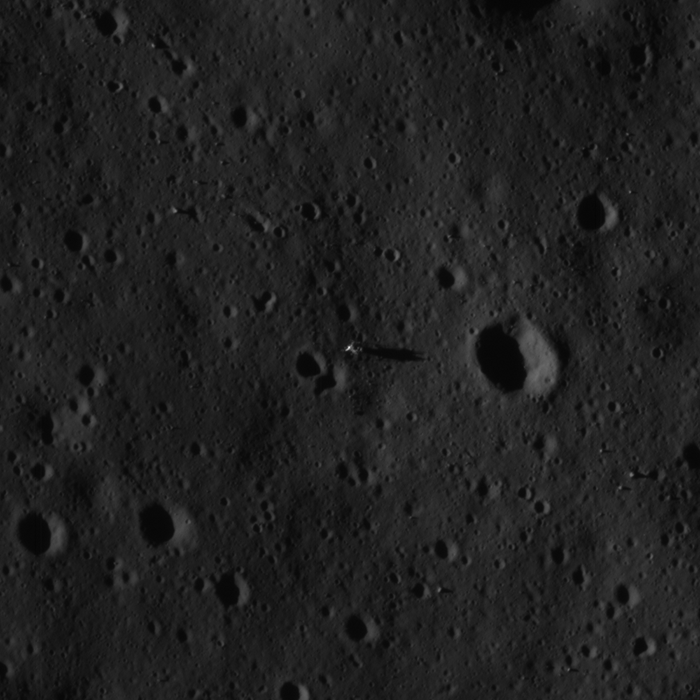
Fig. 9. Raw OHRC image of the Apollo 11 site, enlarge.
To get the image to look as it did in the September 2021 presentation it was necessary to adjust the brightness to bring up the details and then play around with the Free Transformation tool in Photoshop.
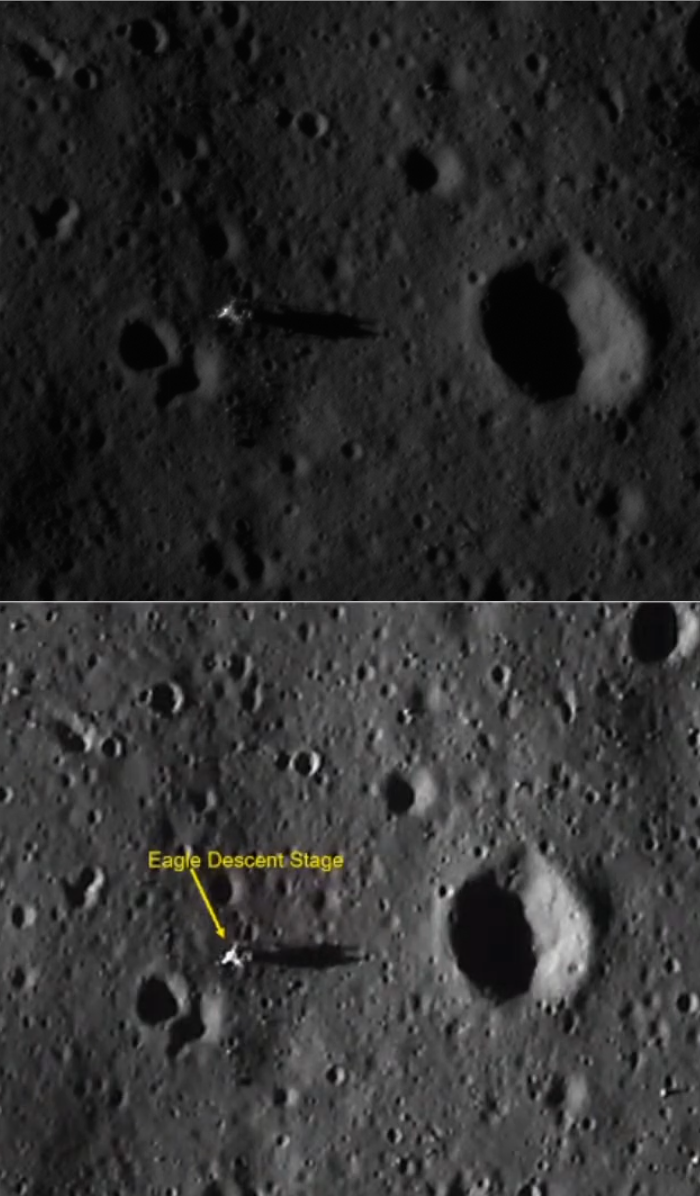
Fig. 10a. Comparison of the raw OHRC Apollo 11 image upper) with the screenshot of the September 2021 presentation (lower).
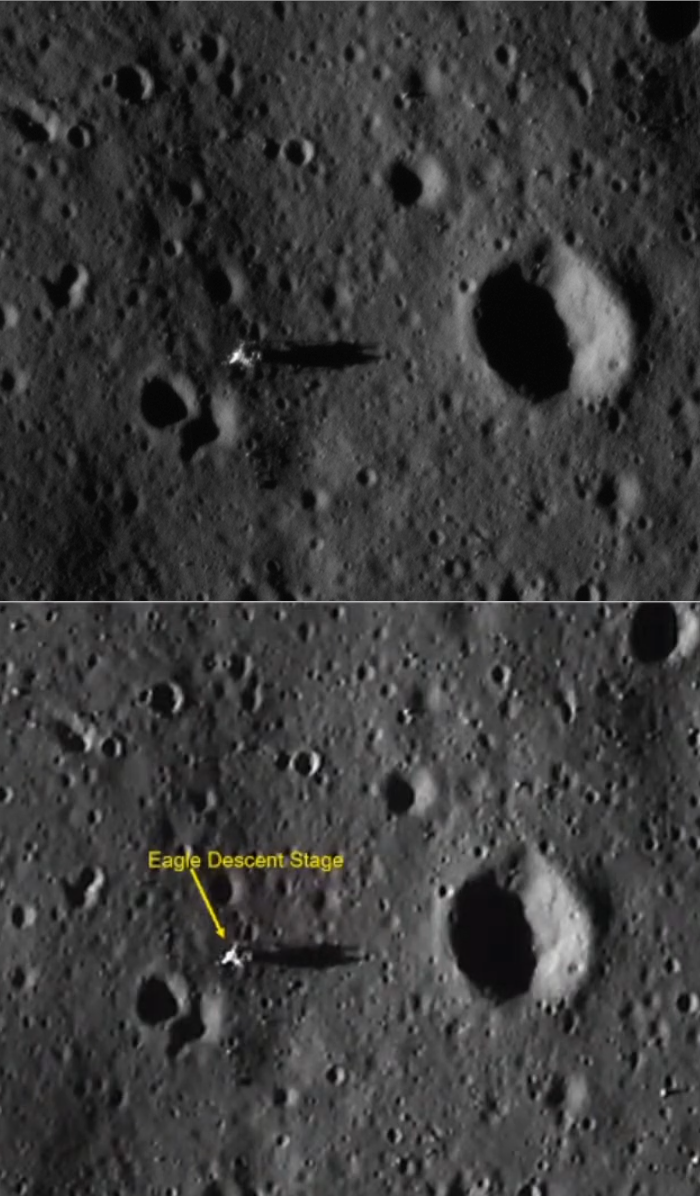
Fig. 10b. Comparison of the raw OHRC image (upper) with brightness and picture dimensions corrected (lower).
This does not alter the appearance of the spacecraft on the surface, it merely restores the image to how it was originally presented by ISRO and makes it clear that, even in the raw image, the spacecraft still appears to be three legged.
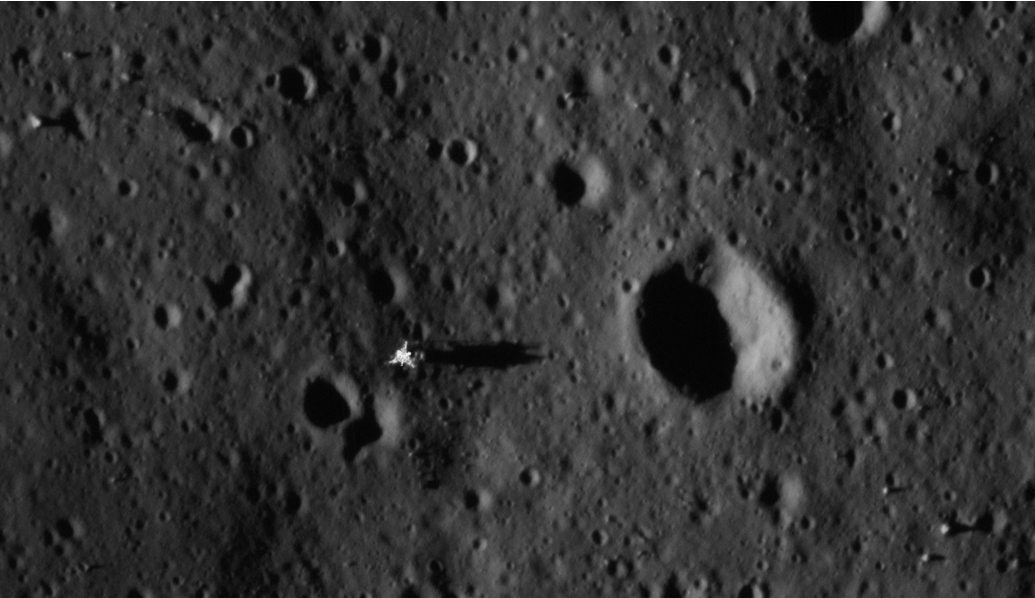
Fig. 11. Raw Chandrayaan-2 image with Surveyor diagram overlay.
That has not stopped some propagandists from trying to come up with excuses. Some have argued that the three-legged appearance is due to tricks of the light. [Editor’s note: An old NASA favourite, remember that inconvenient ‘Face on Mars’ photo?] In an attempt to substantiate this claim, some provided this side-by-side comparison of the September 2021 screenshot with LRO image M117338434RC. This image shows the Apollo 11 site even later during sunset than the Chandrayaan-2 image.
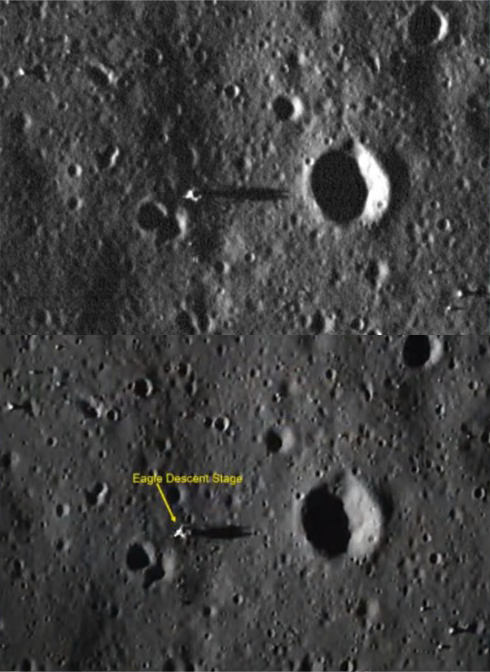
Fig. 12. Propagandists used GoneToPlaid’s so-called “deconvoluted and enhanced” version of LROC image M1173384343RC to blame tricks of the light on “Eagle’s” three-legged appearance in the Chandrayaan-2 photo.
The copy that they chose to use is from GoneToPlaid’s library. GoneToPlaid runs a website where he posts what he claims are “deconvoluted and enhanced” versions of the LRO images.5 This false claim has been taken so seriously that his versions of the LRO pictures have even found their way onto the Apollo Lunar Surface Journal – but there is no deconvolution and enhancement here.
As I proved in back in 2009, in order to create these ‘deconvoluted and enhanced’ images, he only had to throw the images into Photoshop or any other photo editing software, add a 1 pixel Gaussian blur, sharpen the image again, and then play around with the contrast and brightness settings.6 Because blurring removes details rather than restores them, I think this is enough to invalidate GoneToPlaid’s purported ‘deconvoluted and enhanced’ LRO images.
Regarding the tricks of light claim, the original version of M1173384343RC looks nothing like the Chandrayaan-2 image It looks like a stretched blob – even after accounting for the original’s distortion along the x-axis.
Fig. 13. Raw version of M1173384343RC as published on the LROC website. NOTE, due to the way the image was processed, M1173384343RC is stretched horizontally and inverted vertically, enlarge.
There is a horizontal row of pixels sticking out on the left, which I assume is supposed to be either a defect or the LM ladder leg. If the latter, it is not even pointing in the same direction as any of the legs in the Chandrayaan-2 picture.
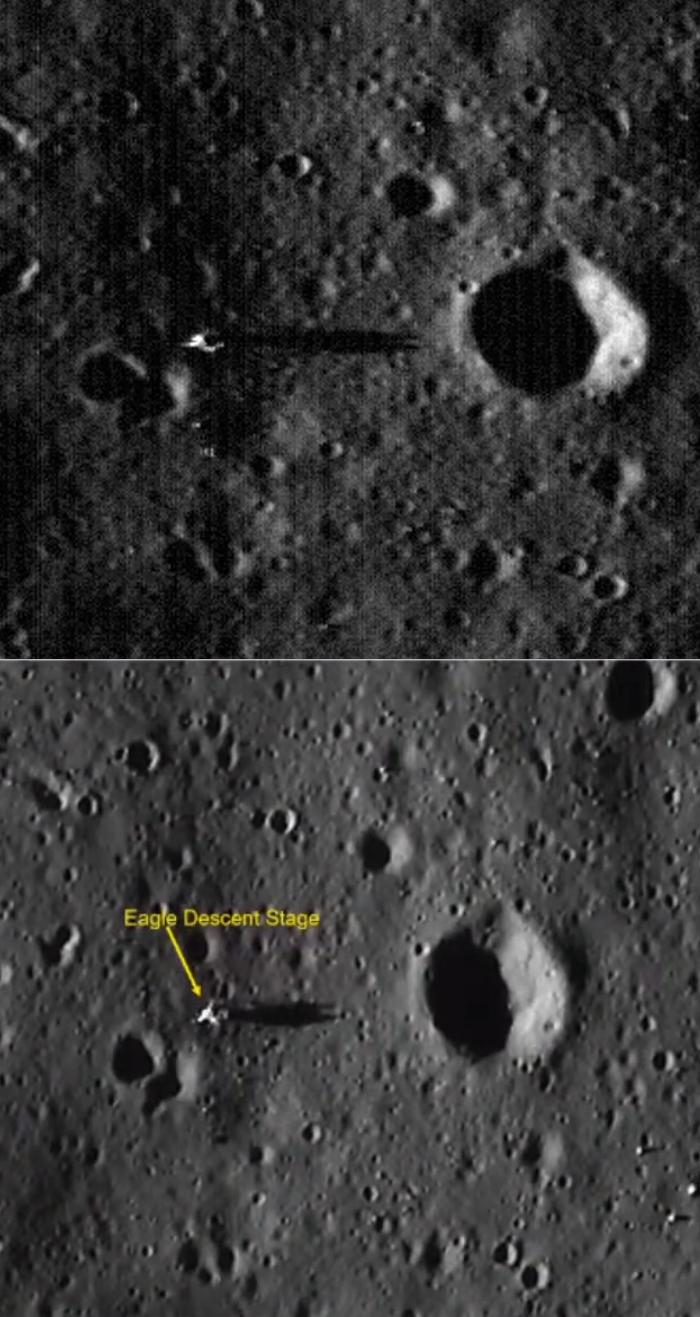
Fig. 14a. Comparison raw M1173384343RC with Chandrayaan-2 image.
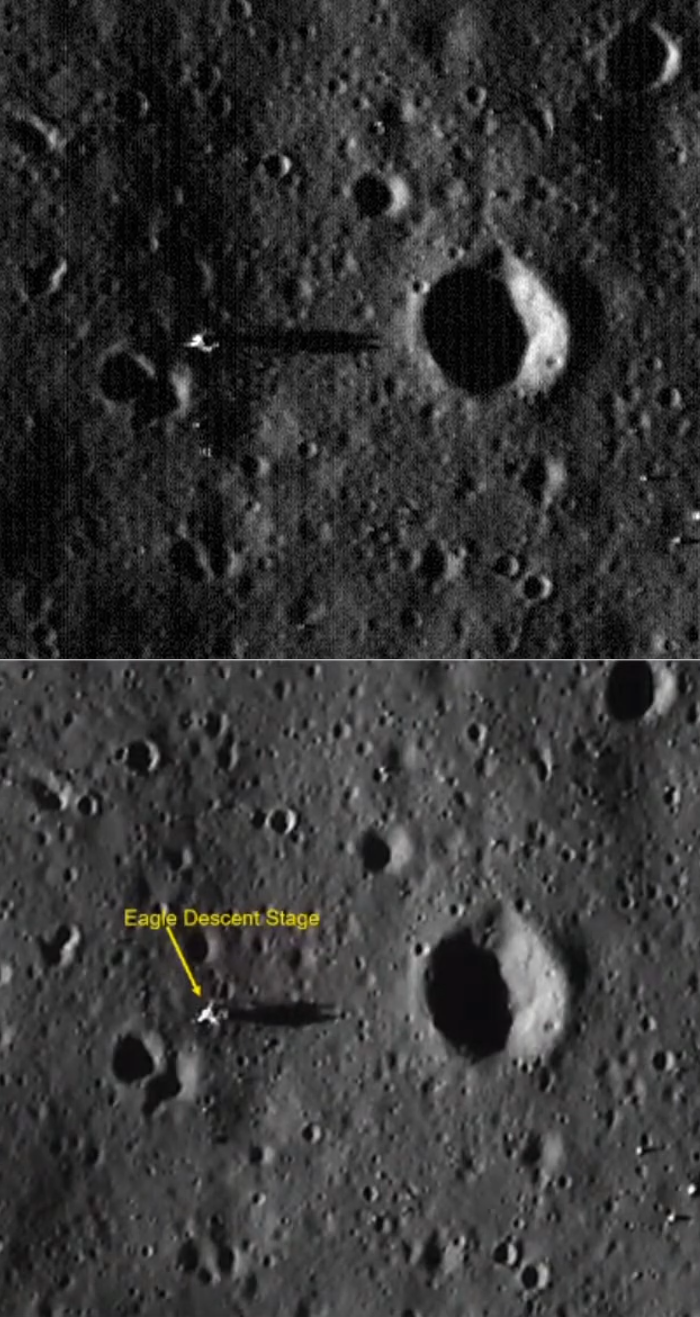
Fig 14b. Same comparison with M1173384343RC’s horizontal distortion corrected.
And following the ‘deconvolution’ steps just described above, I was able to approximate GoneToPlaid’s version of image that they chose to compare with the Chandrayaan-2 image.
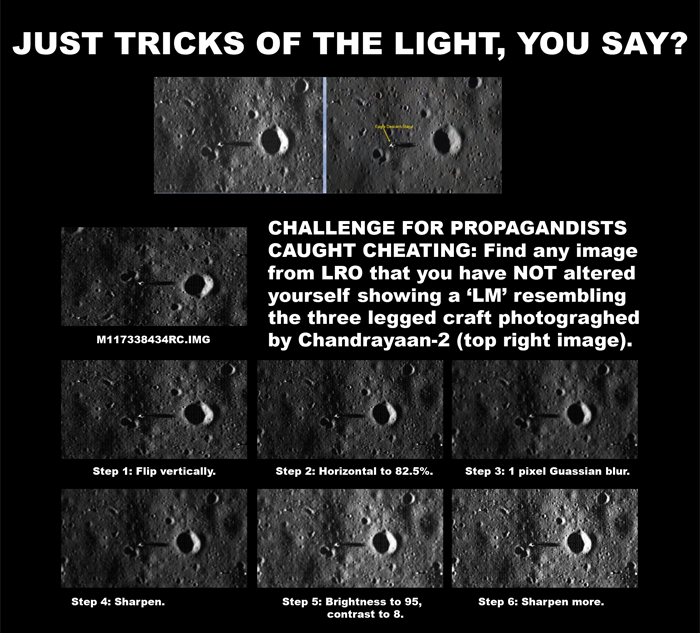
Fig. 15. How GoneToPlaid’s ‘deconvolution and enhancement’ of M1173384343RC was fabricated, enlarge.
Amusingly enough, even with that ‘deconvolution’, the ‘LM’ still doesn’t resemble what Chandrayaan-2 photographed. If I had to use my imagination, I’d say it looks like the hand of a Lego mini-figure. Challenge for propagandists caught cheating: find any picture from LRO that you have not altered showing a ‘LM’ resembling the three-legged lander photographed by Chandrayaan-2.
Now back to the copy of the image on the Ciel & Espace (C&E) website. Firstly, it seems that the dimensions have not even been corrected to un-squash Little West Crater nor have they rotated the image – that’s why the shadow is slightly pointing in towards the bottom right corner. But that’s honestly the least of my worries. Secondly, the image appears not only cropped but enlarged. In the C&E’s copy, the lander is about 50 pixels wide. In the raw image it is under 30 pixels wide.
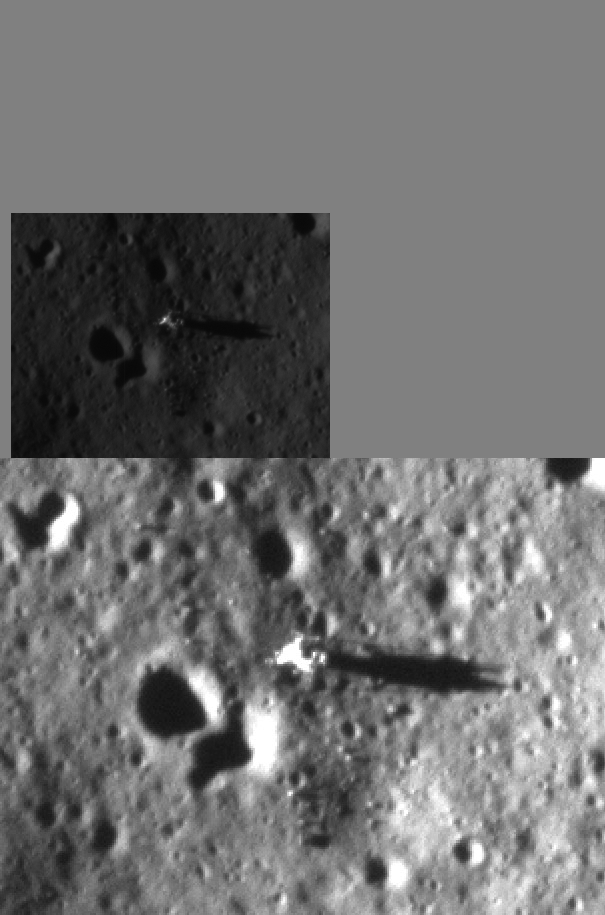
Fig. 16. The raw Chandrayaan-2 image of the Apollo 11 site (left) and the version as released by Ciel & Espace.
I have no objections to resizing the image. However, recreating the image as presented by C&E required multiple steps. And just what steps were required is shocking. First I imported both their version and the raw image into Photoshop, and cropped the raw one accordingly. I then had to enlarge the raw picture by 186.9%.
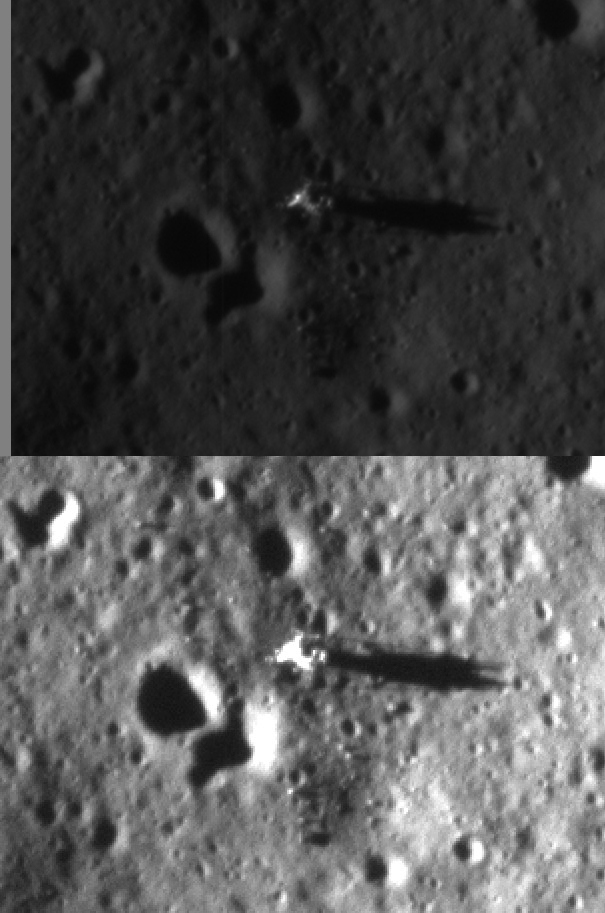
Fig. 17. Raw image resized to 186.9%.
As stated above, this image is considerably brighter than the raw image or even the version ISRO used in their presentations. Approximating the brightness and contrast as seen in C&E’s copy called for not one, but two adjustments. I first needed to set brightness to 150% and the contrast to 100%, then again with the brightness to 108% and the contrast to -50%.
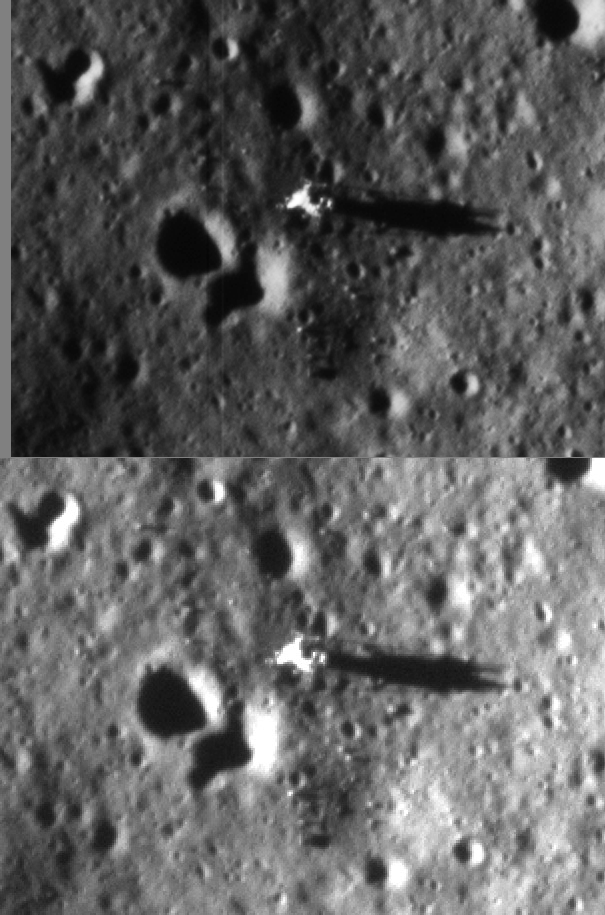
Fig. 18. Raw image with brightness to 150% and contrast to 100%
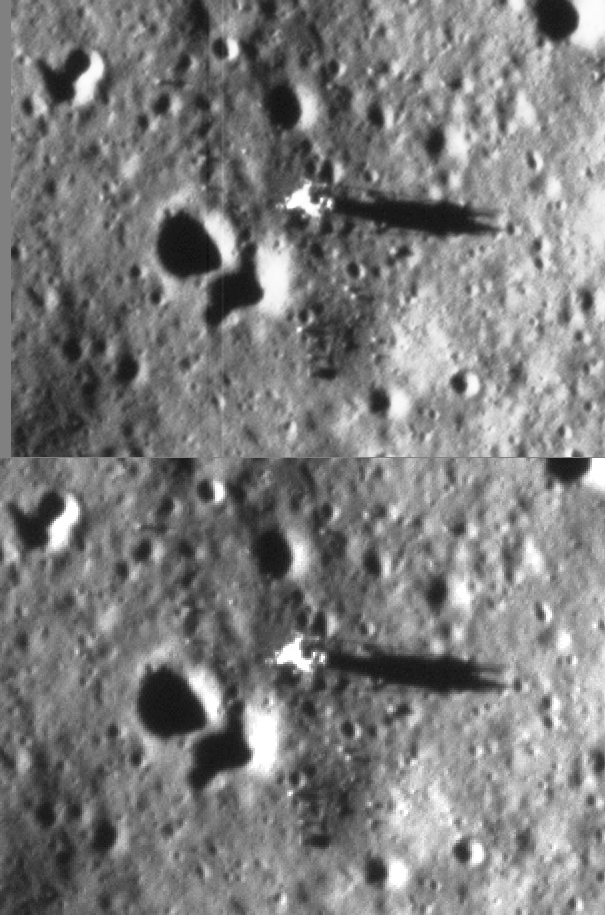
Fig. 19. Second brightness and contrast adjustment, with brightness to 108% and contrast to -50%.
This rendered the lander pure white, but the pictures still didn’t exactly match. The C&E was noticeably more pixelated and still had the issue of pixels of the spacecraft bleeding into the pixels of the surrounding terrain. Additionally, the raw image has a weird imaging artifact that is almost completely absent in the C&E version. To the left of the lander, we can clearly see what appears to be a vertical screen tear cutting through the image from top to bottom.
To somewhat erase this image artifact and get the lander to look the way it does in C&E, I needed to first apply a 1 pixel Gaussian blur, then apply a 2 pixel pixilation effect, and then apply a sharpen edges filter.
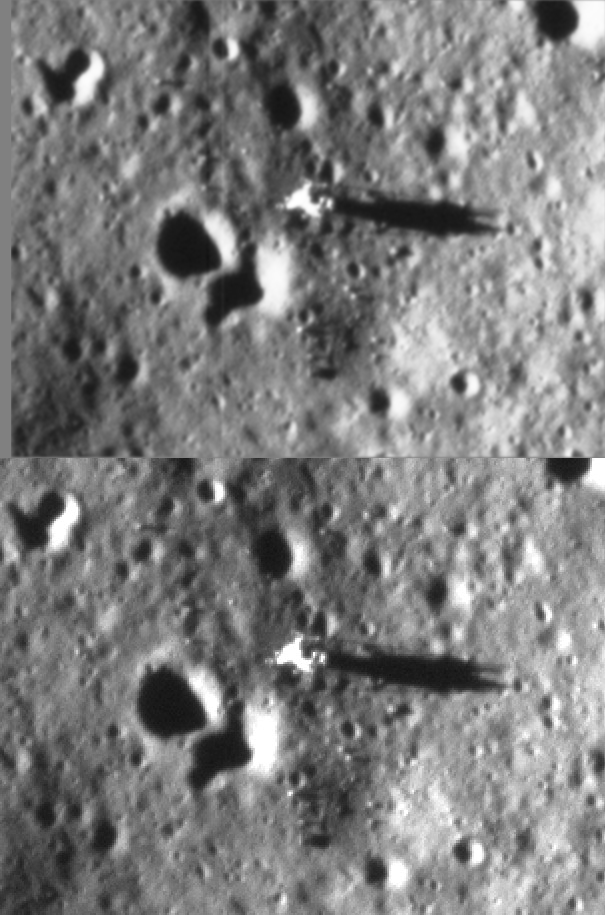
Fig. 20. 1 pixel Gaussian blur applied.
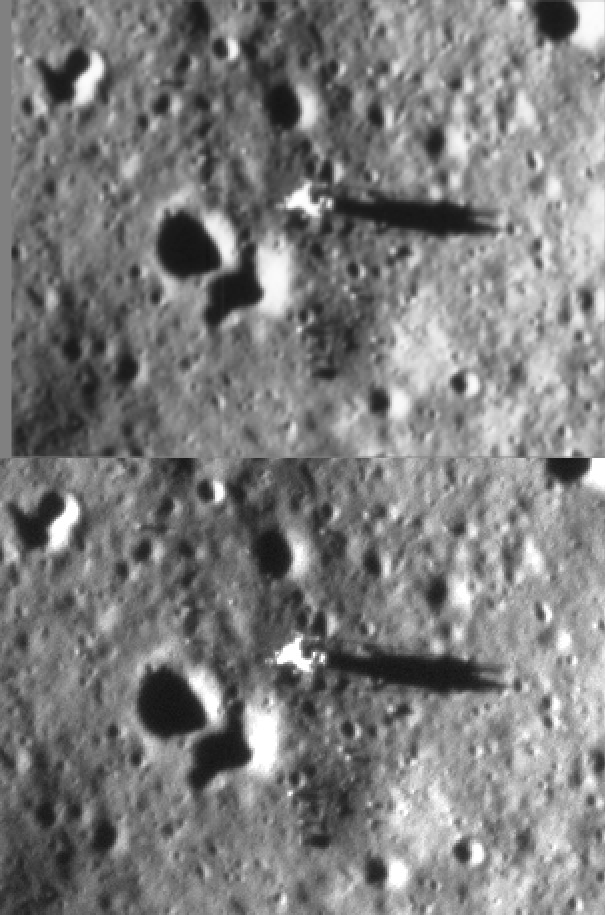
Fig. 21. 2 pixel pixilation filter applied.
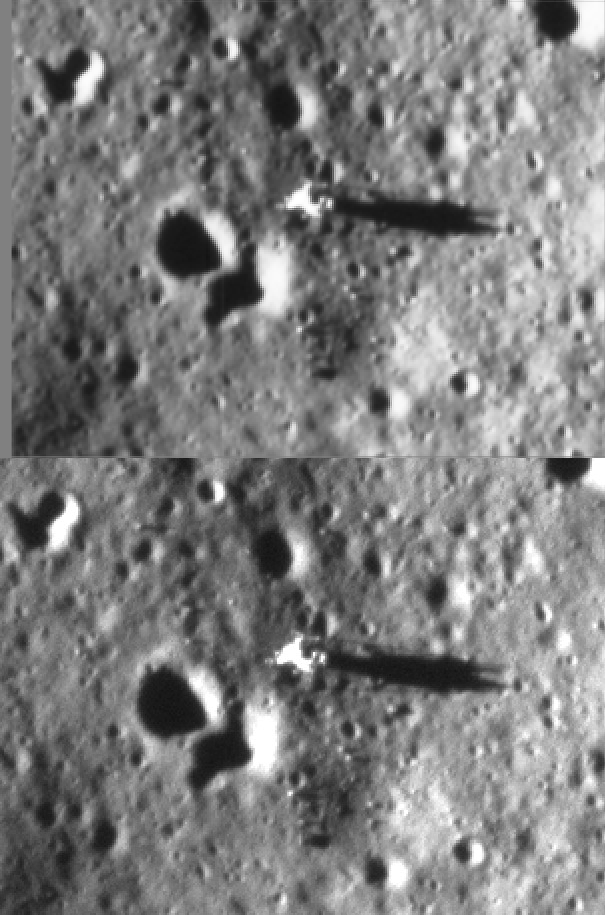
Fig. 22. Sharpen edges filter applied.
Only now do the pictures look near identical. However these pictures arrived at Ciel & Espace, a lot of effort has been made by someone, to get them as far from their true representation as possible. Henarejos also claims that hardware planted by the astronauts can be seen in the Apollo 11 OHRC image. The translation reads:
The foot (sic) which supports the television camera which allowed millions of Earthlings to see the astronauts frolicking near their ship is discernible. It is at the top left of the photograph and can be spotted by its shadow in the form of a horizontal black line. Finally, to the south of what remains of the ship, a small shiny point attracts attention: it is either the laser reflector or the seismometer, both installed by Aldrin.
The objects in question are indistinguishable from tiny rocks. Now to be sure, I wanted to check the Lunar Orbiter pictures of the landing site, which predated Apollo 11. Preferably the digital scans courtesy of the Lunar Orbiter Image Recovery Project (LOIRP). The only other Lunar Orbiter pictures available were released to the public back in the 1960s by photographing the feed off TV screens. However, as I explained and showed in Column #2, the tapes containing the Lunar Orbiter pictures of the Apollo 11 site had oxidized beyond belief before LOIRP had the chance to digitize them. Lunar Orbiter 5 frame 076H3 showed the entire landing site. Without a clean digital transfer by LOIRP, the best available copy I could find was an annotated version published in the Apollo 11 Mission Report as S69-3716. Backup link here.
While every crater at the Apollo 11 site is visible or at least inferred in the all releases of the Lunar Orbiter pictures of the site, the damage to the original tape makes the resulting LOIRP scan worse than the old releases, making it impossible to discern whether or not the objects purported to be TV camera tripod, retroreflector and seismometer were there prior to the mission. It's possible NASA may have analyzed the unfiltered Lunar Orbiter pictures and strategically chose the locations of certain rocks to be the locations of the Apollo hardware. But without a clean transfer of the original tapes, we cannot say for sure.
As for the OHRC image of the Apollo 12 site, another feature of interest is the Surveyor III lander.
Fig. 23. Raw OHRC image of the Apollo 12 and Surveyor III sites, enlarge.
In the Apollo Hasselblad still photos it shows many white surfaces. Of particular interest are two white boxes that NASA describes as ‘equipment compartments'. But in the ISRO image it is dark grey and almost blends with the surrounding surface. The Surveyor layout is indisputably three-legged in appearance and the locations of the footpads seem consistent with the Hasselblad images, but without the equipment compartments it is difficult to tell how the Surveyor III is orientated.
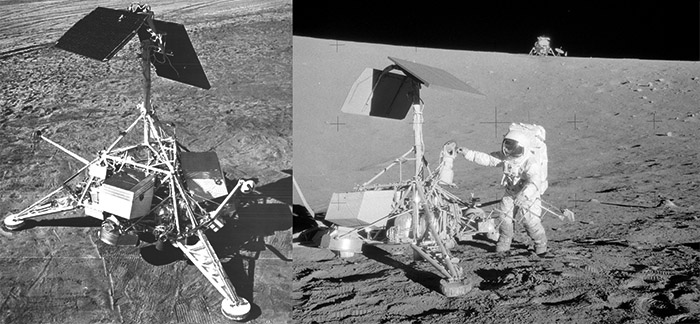
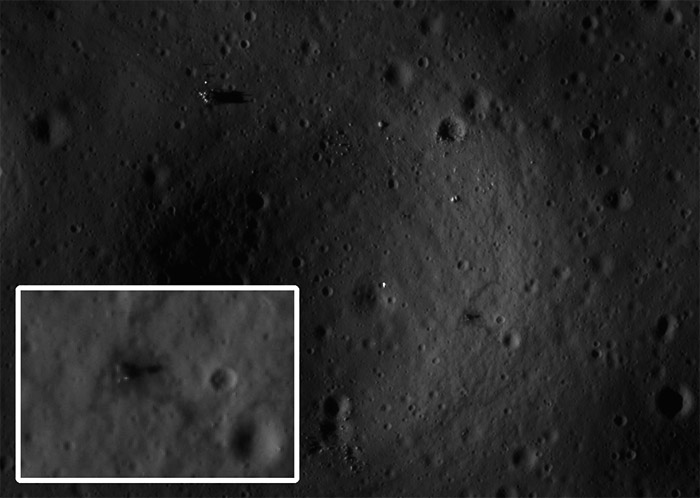
Fig. 24. [upper left] Accurate replica of the Surveyor spacecraft, note the position of the white equipment compartments; [upper right] Pete Conrad supposedly visiting the Surveyor III spacecraft, note the relative positions of the equipment compartments in relation to the Apollo 12 LM; and OHRC image of the same site, with enlargement of the Surveyor III craft [lower image].
A likely reason for the LRO mismatch is that the Hasselblad photos show the two white boxes either side of the craft orientated north and south. But an earlier LRO image, M104662862R – the first released of that region, shows two white dots aligned east-west.
Fig. 25a. enlarge
Fig. 25 a & b. LROC image M104662862R, the first picture of the Apollo 12 site from LRO, as extracted from its .img file and as presented in the LROC website Zoomify Tiff version. Note the arrangement of the white pixels attributed to Surveyor III, there are two blobs arranged East to West. If these are the white equipment compartments, they are not arranged as suggested by the Hasselblad images, enlarge
This suggests the actual alignment was different – something that would not have been known at the time, since the Lunar Orbiter pictures of the site predate both Apollo 12 and Surveyor III.
Fig. 26. The landing sites of Apollo 12 and Surveyor III as photographed by Lunar Orbiter III (left) and LRO (right), enlarge.
This was highlighted in my September 2009 video, MoonFaker: Tracking The Tracks.7 Since the release of that video, all later images of that region have shown the craft in very unusual and inconsistent ways, as shown in several other videos.8,9
There is another interesting anomaly concerning the Surveyor III. In both the LRO and Chandrayaan-2 images, the Surveyor III is surrounded by a dark triangular smudge of pixels attributed to astronaut boot print trails.
Fig. 27. Comparison between OHRC image of the Surveyor III [upper] with the original LROC image M104662862R [lower]. The Surveyor seems to have moved to the left in the OHRC data, note how its shadow now occupies the space previously occupied by the Surveyor itself in the LRO image, enlarge.
An animation of the two is avaiable here.
Astronauts Conrad and Bean allegedly inspected the spacecraft very thoroughly. If neither of these pictures are photo manipulated, the Surveyor III should appear in the same location between the photos – since the spacecraft has not moved in the twelve years between the two pictures. In LROC image M104662862R, you can clearly see that the white blobs attributed to Surveyor III occupy the very center of the triangle. But in the Chandrayaan-2 image, you can clearly see that the Surveyor is off center to the left and its shadow occupies the space previously occupied by the Surveyor’s own white pixels.
This is a problem. How could the Surveyor have moved to the left between the two shots? I do not dispute that the Surveyor III spacecraft landed on the Moon. If NASA did indeed receive these pictures first and then passed them onto ISRO a possible explanation for this might be an editor’s mistake. Perhaps the editor moved the Surveyor and its shadow to a separate Photoshop layer and then moved it aside so that he could draw in the triangle of astronaut footprints. Moving the spacecraft to a separate layer might have made things easier, no chance of drawing the boot prints over the top of the Surveyor that way. But for whatever reason, the editor accidentally forgot to move the Surveyor III back to its original position.
There is a further sign that the Apollo 12 image may have been tampered with. My tech savvy friend noticed something amiss whilst converting the .img files. Within Surveyor Crater, there is a vertical smear of pure white pixels, about 5 pixels wide and 9 pixels high. It appears over the top of the sunlit side of a small crater and continues north over the surrounding terrain outside the rim.
Fig. 28. The raw OHRC image of the Apollo 12 site has a smear of pixels with R,G,B = 255, which is pure white. Only pixels attributed to man-made equipment have pure white pixels. Stylus slip? enlarge.
None of the other craters in the picture have a bright hot spot, nor does this white smear appear in any of the LRO pictures. The only time this little crater appears pure white on the right side is when the entire right side of Surveyor Crater is lit up, in which case all the other little craters have a bright side too.10
Fig, 29. Comparison of OHRC’s stray pixels with other LROC images of same location. Top L-R: Chandrayaan-2, M114104917R, M157750563L; Mid L-R: M117650516R, M120005333R, M120012135R; Bottom L-R: M109386083R, M168353795LR, M175428601R. Also note the drastically inconsistent appearance of Surveyor III between these pictures, enlarge.
In the Chandrayaan-2 image, the only other places to feature pure white pixels are on the ‘LM’ and other blobs attributed to manmade equipment. Such blobs are accompanied by a stretch of dark pixels purported to be shadows. There is no such shadow on these stray pixels.
As stated above, I suspect that NASA’s DSN received the Apollo 12 pictures first while ISTRAC received the Apollo 11 image first. And thus NASA had the opportunity to give the Apollo 12 picture the same manipulations as the LRO pictures, but not the Apollo 11 photo. Hence the obvious difference between the two images. If true, a possible explanation for these stray pure white pixels is that the editor’s mouse or stylus slipped while editing and went unnoticed. Perhaps they didn’t have the time to check? After all, NASA was merely assisting ISRO with the tracking. Maybe they only had a limited amount of time to edit the picture before passing it onto ISRO?
Would that supposition explain the anomalous existence of the American flag? As I had noted in my September 2021 Column #2, one of the anomalies with the LRO images is that many purport to show the American flag allegedly planted at the sites casting a shadow.

Fig. 30. Apollo 12 site: the ALSJ caption reads: “Animation made from five LROC images of the Apollo 12 landing site, ordered from sunrise to sunset, and showing the changing length and location of the shadow cast by the U.S. flag erected by the crew. The frames are: (1) M131806467LC, Sun 8 degrees above the eastern horizon; (2) M114104917RC, 32 degrees east; (3) M137699517LC, 59 degrees west; (4) M117650516RC, 9 degrees west; (5) M132983773RC, 6 degrees west. LROC images courtesy NASA/GSFC/Arizona State University.” [emphasis added]
Indeed the accompanying ALSJ article by James Fincannon, dated April 21, 2012 is titled Flag Still Aloft,11 specifically addresses the LROC Apollo 12 flag shots and the label on the still images and the text categorically states that the shadow seen is definitely the flag’s shadow:
What is really being seen in these five images is the flag shadow itself and not the flag pole shadow. The flag pole is only about 7/8ths of an inch in diameter. LRO cameras can at best see down to 0.45 meters (1.5 feet) which is the equivalent to one pixel width in the images and 0.55 meters (1.8 feet) which is equivalent to one pixel of height. This resolution is just good enough to see the drooped flag shadow (estimated to be from 6 inches to 1.5 feet). [emphasis added]
The author cites science librarian, author and vexillologist Anne Platoff as being an authority on the development of the Apollo flag. [See also author’s side note below] Reading across Platoff from her 1993 technical report to NASA,12 via her 2002-2007 paper on Flags in Space,13 through to the paper in which she dealt with the flag relative to conspiracy theories14 (notably published in 2011 the year before Fincannon’s Apollo 12 Flag article) one finds contradictions between her three papers and also with Fincannon’s article.
Whereas Fincannon states that given the very small diameter of the poles used to construct it would not be possible to see the hardware supporting the flag from space, Platoff’s 2011 paper shows an image of the Apollo 17 site with the comment “a faint black line shows the crossbar of the lunar flag assembly”.
Relative to the depth of insertion of the flagpole, these also vary from report to report. Her 1993 NASA technical report asserts that Apollo 11 only managed from 6-9 inches into the surface. A later paper quotes the post-flight crew press conference (that jolly affair) wherein Aldrin stated that the flagpole was inserted into the ground to a depth of 5-6 inches. Which is handy because that was the minimum insertion depth calculated by the designers of the hardware; but neither measurements work with the later statements attributed to Aldrin, that Apollo 11 could only get the pole in a couple of inches or so.
Platoff professes uncertainty about whether the Apollo 12 flagpole is still standing, (Fincannon states that it was inserted 12 inches into the surface). However, across all her papers, Anne Platoff is absolutely certain about the inability of the nylon flag material to survive the three strikes inflicted by the lunar environment: the discolouring of the material due to radiation (called radiation darkening); the prolonged exposure to UV light produces photodegradation or ‘sun rot’; and if all that doesn’t suffice, it will be utterly wrecked by micrometeoroids in very short order. And in that she joins with my analysis: as I wrote in September 2021, an incident on the Mir station proved the lunar flags’ survival was impossible. When cosmonauts erected the Soviet flag outside the station, it was destroyed in twenty eight months by micrometeorites and orbital debris.15 Only two threads remained.16
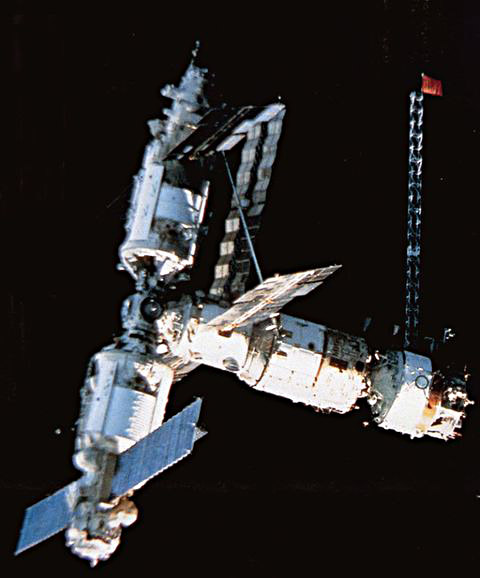
Fig. 31. The Soviet flag (top right) also had to deal with the conditions of space prevalent outside the Mir station, including micrometeoroids. A period of two years and four months elapsed from the hoisting of the Kumach (revolutionary red-coloured cloth flag) to the removal of the frame which held it tattered remains.
To compare what effect the lunar micrometeorite hazard would have on the Apollo flag, I used data from the Lunar Orbiter and Explorer 16 and 23 missions of the 1960s, which all carried micrometeoroid collection experiments,17 and cross referenced these measurements with data gathered by Mir’s Orbital Debris Collector.18 Doing the calculations I found the best you can expect the flags on the Moon to last would be 7.6 years.19 And I might even be optimistic. Platoff cites tests on the flag material that rendered it useless within months, and an article in Business Week magazine of July 19, 1969, quoted a high NASA official as saying that “the flag probably wouldn’t last long because it isn’t protected against micrometeoroids”.
From all of the above, it is clear that it is impossible for the flags to have lasted long enough such that they could be photographed casting a shadow onto the lunar surface more than three decades later. Yet the ALSJ labels their LROC image of Apollo 12 as Flag Shadow; the Apollo 12 image from Chandraayan-2 is labelled Flag Pole Shadow, whereas technically the pole is not the crossbar; and Ciel & Espace with no labels at all, has gone for the whole package: pole, crossbar and flag with this (translated) commentary on its unlabelled Apollo 12 image:
The flag planted by the astronauts is still standing. As the horizontal crossbar which allowed it to ‘fly’ did not fully unfold, the flag is draped along this crossbar and so the flag’s shadow is seen as a long thin triangle.
Are all these flag issues literally flagging up signs of firefighting or whistle-blowing? I conclude that the Chandrayaan-2 indeed photographed a very different craft at the Apollo 11 site, and this picture was probably received by ISRO’s ISTRAC. But the Apollo 12 site was more likely received by NASA’s DSN first and given the same treatment as NASA’s clearly-manipulated LRO pictures. And this conclusion stems from the anomalies concerning the flag shadow; the Surveyor III appearing in the wrong place as suggested by the LRO images; and some stray white pixels that may indicate an accidental mouse or stylus slip by the editor. Again, I leave ISRO to confirm or dispute my suspicion as to which of the two tracking networks received these pictures.
Author’s side note
Anne Platoff’s papers were brought to my attention by the Aulis editors during the writing of this column. However, if we see eye to eye on the fact that the American flags could not have lasted long in the lunar environment, that is where our mutual viewpoints end.
In her response paper to Apollo hoax proponents, I noticed one of my videos cited in her references. The video in question is titled Initial Apollo 15 Flag Movement.20 As the title suggests, it concerns the Apollo 15 flag ceremony, which infamously showed the American flag wave as David Scott moved past it. My video proved conclusively that the initial movement of the flag began as Scott approached it. This would only be consistent with the astronaut pushing air into the flag, and utterly demolishes the excuse that it moved because he brushed it with his elbow or PLSS.
Despite this, Platoff gives credence to that excuse when she writes:
Contributors to the Apollo Lunar Surface Journal website have suggested several more plausible explanations for the flag’s movement:
(1) Dave could have brushed against the flag with his left arm as he went by;
(2) he could have kicked some dirt with his boot that hit the bottom of the flag;
(3) he could have pushed a mound of soil sideways with his boot that pushed against the flagstaff;
(4) the impact of his boots on the ground as he ran past could have shaken the flagstaff;
(5) he might have been carrying a static charge which attracted the flag material;
(6) the flag could have been disturbed by emissions from the backpack.
Neglecting to tell her readers directly, that the ALSJ writers had actually rejected five of these so-called more plausible explanations for various technical reasons, Platoff concludes:
In the analysis offered on the site, it is suggested that the most likely cause was that the astronaut had brushed against the flag. This conclusion is validated by an experiment posted on YouTube by an Apollo defender.
The ‘Apollo defender’ she refers to is Shane Killian. His ‘validation’ turned out to be a video (a rambling, insult-filled rant in my opinion) during which Killian recreated the Apollo 15 scene. Using demonstrably exaggerated computer graphic models, he attempted to illustrate that the astronaut would have been extremely close to the flag. Killian then proclaimed: "Personally, I think he's so close we can just conclude he brushed it with his elbow!" His assumption totally ignored a fact that had been pointed out long before Killian did his ‘experiment’: The flag’s initial movement occurred before Scott moved past it – not after. And my own recreation of the scene (in my video produced in response to Killian’s) did indeed reflect the fact that when Scott was moving past the flag he was somewhat further away from it than Killian, or indeed Platoff, would prefer.
Regarding Platoff’s response to hoax proponents, she had also stated:
In the process of doing research for this paper, I have also found my lunar flag assembly history cited by some of the conspiracy theorists. This has motivated me to take a serious look at their claims about flags on the Moon.
Likewise, seeing my conclusive video analysis cited by a defender of the Apollo missions, yet its content ignored in favour of an unsubstantiated ‘experiment’ compels me to speak out, and while I am doing so, I note that in defending NASA, Platoff has also aimed, inaccurately, at Bill Kaysing. Platoff wrote:
Among the conspiracy theorists who purported that NASA faked the moon landings was Bill Kaysing, the author of a book called We Never Went to the Moon. When this author examined this book in the early 1990s, she was not surprised that the publication exhibited all of the classic characteristics of a “vanity press” publication. The layout and design was grossly amateurish and the sources cited were impossible to trace. In addition, Kaysing used NASA training photos of astronauts in space suits practicing EVA techniques on a simulated lunar surface as part of his evidence. He stated that since you could see the roof of the facility in the “untouched” photos this demonstrated that NASA had faked the moon landing photos. [emphasis added]
While it is fair to criticise the aesthetic appearance of any publication, the biased reporting of the contents therein is another matter entirely. Platoff cites Kaysing’s 1981 edition of his book, yet comments on images featured only in the 1974 edition. As owner of both the original 1974 and the expanded 1981 editions of Kaysing’s book, I can emphatically say that Kaysing made no such claims as she states them. Yes, there are EVA training pictures included in the 1974 edition, but where they do exist, they are clearly captioned: “Note that these practice shots of astronauts engaged in lunar surface horseplay could have easily been converted to actual location shots by simply finishing the ‘set’.” The expanded and more professionally polished Desert Publication edition from 1981 does not contain pre-mission training photos. In addition, Kaysing’s references were clearly listed in the bibliography at the end of his book. And even today, I had no trouble finding physical copies of them on ebay.
The only two items that I could not obtain, for obvious reasons, were the Baron and Phillips reports to NASA. Both of which concerned the various safety violations and multiple negligent undertakings that culminated in the Apollo 1 fire. I have not been able to find PDFs of either report, NASA’s online version only contains five of the first six pages of Baron’s report while their online release of the Phillips report contains all but one of the pages previously reprinted by Kaysing. In his 1974 edition he only included a snippet of the transcript of Baron's testimony. However, his expanded 1981 edition contained entire sections of Thomas Baron’s surviving 55-page report and General Sam Phillips’ 372 page report, and he also compared several of the hundreds of parallel technological issues plaguing Apollo that were mentioned by both Baron and Phillips.
Whether simply the result of her stated personal preference for the Apollo status quo, or intentional, Platoff’s use of language: ‘vanity publishing’; ‘sources impossible to trace’; and misparaphrasing what Kaysing actually wrote, achieve the same aims: they create false impressions of the author and deter anyone from actually reading his book. Why might that be considered a requirement? When taken together, the fact that Kaysing had replaced those studio images of Astronauts-in-training with copious data from those two very unwelcome, in-house technical reports on the parlous state of Apollo, could be reason enough.
Jarrah White
Aulis Online, April 2022
About the Author
Jarrah White is an Australian filmmaker, astrophysicist and geologist. He has Certificate III & IV qualifications with distinctions in Screen and Media at the Sydney Institute of TAFE NSW, Australia; and a BSc with Major in Geology and a Minor in Astrophysics completed in November 2017 and July 2019 respectively.
References
- Day1-Webinar Series – Space Technology: Opportunities and Challenges | ISG-AC | SAC-ISRO | BMU-Surat
- ISRO Telemetry Tracking and Command Network (ISTRAC)
- ISRO Telemetry, Tracking and Command Network (ISTRAC): Supports Astrosat Mission
- P. Henarejos (2022) 'La sonde lunaire Chandrayaan 2 détaille les sites d’Apollo 11 et 12', Ciel & Escape
- GoneToPlaid's Apollo website
- MoonFaker: LRO, The Surveyor III Addendum.
- MoonFaker: LRO, Tracking The Tracks
- MoonFaker: LRO, Silhouettes At 25km.
- MoonFaker: LRO, More Dead Ends
- LROC/ASU Apollo 12 Feature Highlights
- J. Fincannon (April 2012) Flags Still Aloft and Six Flags on the Moon: What is Their Current Condition?
- Anne M. Platoff, Where No Flag Has Gone Before: Political and Technical Aspects of Placing a Flag on the Moon. Written while Platoff worked as a research librarian for the New Initiatives Office, Johnson Space Center–La Porte, Texas this paper was presented at the North American Vexillogical Association (NAVA) meeting of 1992, in San Antonio, winning the Captain William Driver Award for the best of the eleven papers presented. It was then published by NASA in August 1993 as a NASA Contractor Report 188251. Later published in 1994 by NAVA in volume 1 of Raven: A Journal of Vexillology. Platoff states "This work has been cited in a scholarly journal article, in a master’s thesis, twice by ABC News, and also resulted in my providing information for an episode of the Mythbusters television series and for the movie Independence Day". https://escholarship.org/uc/item/93t5x9dq
and https://historycollection.jsc.nasa.gov/JSCHistoryPortal/history/flag/flag.htm
and https://nava.org/raven-volume-1
- Anne M. Platoff, Flags in Space: NASA Symbols and Flags in the U.S. Manned Space Program. Originally one of seven papers presented at the 2002 NAVA 36 meeting in Denver Colorado, it was later printed in The Flag Bulletin No. 230/Vol. XLVI, Nos. 5-6 (Sept-Dec 2007), pp142-222). Platoff notes that while the issue date says '2007', this issue was finally published in December 2010, due to the fact that "The Flag Bulletin is a small publication published by the Flag Research Center. They are behind in publishing the journal and have continued to backdate issues." Apollo flags pp72-178 [PDF pp33-40]
- Anne.M. Platoff, Six Flags over Luna: The Role of Flags in Moon Landing Conspiracy Theories. This paper was one of thirty-six presented at the 24th International Congress of Vexillology (ICV). This biennial event was held in conjunction with NAVA’s 45th annual event 1-5 August 2011 in Washington DC.
- Encyclopedia Astronautica, Soyuz TM-15
- Space Worlds Of Andrey Sokolov – Fandom Interview [In Russian]
– На одной из ваших картин изображен момент водружения в космосе над орбитальной станцией «Мир» Государственного флага Советского Союза. Это реальный факт или вы его придумали?
– Реальный. Помните, в марте 1991 года состоялся референдум о сохранении Советского Союза. Большинство населения страны сказали «да» Союзу. А в начале июня на орбитальную станцию отправлялись космонавты Арцибарский и Крикалев. Они решили отметить знаменательное событие. Купили в магазине обычный советский флаг, который вывешивается по праздникам у входа в государственные учреждения, и взяли его с собой на борт космического корабля. В полете во время одного из выходов в открытый космос они водрузили кумачовое полотнище, предварительно взятое в рамочку (в космосе ведь нет воздуха и знамя не может развеваться), на самую макушку 14-метровой фермы.
Около года флаг несуществующей уже страны реял над орбитальной станцией. Со временем он стал разрушаться: сказывались резкие перепады температуры, радиация, космическая пыль... Я попросил очередной экипаж снять полотнище и доставить его на землю. Но просто так выйти в космос космонавт не может. Это сложнейшая операция. Наконец, за борт орбитальной станции вышел работать Толя Соловьев. Я как раз тогда был в Центре управления полетом и спрашиваю: «Толя, как там флаг?» «Осталось две нитки», – последовал ответ. Флаг растворился в вечности. Вместе с великой страной, открывшей миру путь к звездам.
А может быть, это к лучшему? Он не был, как в Кремле, спущен и навечно остался на орбите.
Translation: [Editor’s note: checking the records this account has discrepancies].
Interviewer: One of your paintings depicts the moment when the National Flag of the Soviet Union was hoisted in space over the Mir orbital station. Is this a real fact or did you make it up?
Sokolov: Real. Remember, in March 1991, a referendum was held on the preservation of the Soviet Union. The majority of the country's population said "yes" to the Union. And in early June, cosmonauts Artsibarsky and Krikalev went to the orbital station.[MIR nine crew actually went there 18 May 1991] They decided to celebrate a significant event. We bought an ordinary Soviet flag in the store, which is hung out on holidays at the entrance to state institutions, and took it with us on board the spacecraft. In flight, during one of the spacewalks, [the sixth of July 27, 1991] they hoisted a kumach cloth, previously framed (there is no air in space and the banner cannot flutter), on the very top of a 14-meter truss. For about a year, the flag of a country that no longer exists flew over the orbital station. Over time, it began to collapse: sudden changes in temperature, radiation, cosmic dust affected ... I asked the next crew to remove the banner and deliver it to earth. But just like that, an astronaut cannot go into space. This is the most difficult operation. Finally, [during the 2nd EVA of Sept. 7th 1993] Tolya Solovyov went overboard the orbital station to work. Just then I was at the Mission Control Center and I asked: “Tolya, how is the flag there?” “There are two threads left,” came the answer. The flag has vanished into eternity. Together with the great country that opened the way to the stars for the world. Or maybe it's for the best? He [It] was not, as in the Kremlin, lowered and[but] forever remained in orbit.”
Solovyov actually removed the metal frame which held the flag – which had lasted barely 28 months.
http://www.spacefacts.de/mir/english/mir-9.htm [hoisting of flag]
and http://www.spacefacts.de/mission/english/soyuz-tm15.htm [removal of fame]
- Moon Views: Official Website of Lunar Orbiter Image Recovery Project (LOIRP), Lunar Orbiter Micrometeoroid Experiments
- F. Hörz, G. Cress, M. Zolensky, T.H. See, R.P. Bernhard, J.L. Warren Orbital Debris Collector 30-Day Post Retrieval Report Mir Environmental Effects Payload (MEEP) Archive System, NASA Langley Research Center https://web.archive.org/web/20160317002645/http://setas-www.larc.nasa.gov/meep/30-day/odc/odc_30_day.html
- MoonFaker: LRO, Flag or No Flag? II
- Jarrah White, Initial Apollo 15 Flag Movement, YouTube video
and MoonFaker: Flagging The Dead Horses Part 2.
This article is licensed under
a Creative Commons License
